Ancient Scrolls from Almost 2,000 Years Ago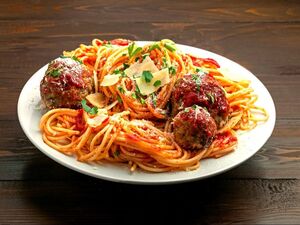 How you doin’? In my last book I talked about the importance to mankind of food and drink to culture. “The Anthropology of Man Can Be Traced More Accurately Through the Foods & Beverages Of Time Rather Than Just The Richness Of Art, The Prose Of Literature, The Rhythm Of Music Or The Structure Of Architecture.” Well, listen up… an ancient scroll from almost 2,000 years ago has finally been decoded. Quite the step up from the bits of hieroglyphics we ‘learned’ in high school Ancient Egypt classes, this task needed the help of artificial intelligence (AI) to be worked out. The Herculaneum papyri are made up of about 1,800 scrolls and ended up buried in ash after Mount Vesuvius erupted in 79AD. These scrolls were excavated from an ancient Roman villa, but it’s been an absolute slog trying to unroll and read them. So, the Vesuvius Challenge was set up in March 2023 to try and decode them, offering a mega prize pot of $1million to crack the code. Papyrologists (yes, they’re a real thing) worked with the contest, believing the Roman scroll contains ‘never-before-seen text from antiquity’. Might it be politics, religion, pros, poetry or maybe something else? Three students managed to read 15 columns in a scroll, helped out by AI-powered coding machines. Youssef Nader in Germany, Luke Farritor in the US, and Julian Schilliger in Switzerland will get to share the $700,000 prize money after managing to read over 2,000 letters. Nat Friedman is one of the challenge’s organizers and TIME reports that after printing out the winning submission he said: “All this has been in this dreamlike digital world in my imagination before. Seeing it on paper, rolling it up, it just made it so tangible.” This winning submission totals four passages, each of 140 characters. TIME explains: “With at least 85% of the characters in each of those passages recoverable by professional papyrologists. It also contains a further 11 columns of text.” The text in question is a piece of Epicurean philosophy on the subject of cuisine pleasure… that’s right, Epicurean philosophy! The winning submission shows ancient Greek letters on a large patch of scroll, and the author seems to be discussing the question: are things that are scarce more pleasurable as a result? The scrolls were excavated from an ancient Roman villa, Herculaneum. The author, whose identity is unconfirmed, doesn’t think so: “As too in the case of food, we do not right away believe things that are scarce to be absolutely more pleasant than those which are abundant,” one passage from the scroll reads. In the final section of the scroll, the author appears to criticize his intellectual adversaries, who 'have nothing to say about pleasure, either in general or in particular, when it is a question of definition'. Professor Alice Roberts dubbed this discovery ‘the archaeological discovery of my lifetime’. Although, there is yet a whole load to be discovered with the combined efforts of the Vesuvius Challenge resulting in about five percent of one scroll being read. And the contest confirmed on X: "In 2024, our goal is to from reading a few passages of text to entire scrolls, and we're announcing a new $100,000 grand prize for the first team that is able to read at least 90% of all four scrolls that we have scanned." So, what might they have discovered—a recipe for spiced, Roman-Style Meat Balls? Roman Meatballs with Pompeiian Tomato Sauce Prep time: 25 minutes Cook time: 40 minutes Total time: 1 hour 5 minutes Ingredients For the meatballs 1/2-pound lean ground beef 1/2-pound ground pork 1 cup Italian seasoned breadcrumbs 1/2 cup Italian grated Parmesan cheese 2 tablespoons fresh chopped Italian parsley 4 cloves minced garlic 2 large eggs, lightly beaten 1 teaspoon kosher salt 1/2 teaspoon black pepper olive oil (for browning the meatballs) For the sauce 1/2 cup virgin olive oil 1 medium finely diced yellow onion 4 cloves garlic, whole 1-28-ounce can of San Marzano Italian-style tomatoes (imported from Italy) 1-28-ounce can of tomato purée 3 tablespoons freshly chopped Italian parsley 2 teaspoons dried thyme kosher salt to own taste fresh ground black pepper to own taste Accompaniments 1-pound dried spaghetti extra chopped parsley for serving Fresh basil added options red pepper flakes for serving grated Pecorino Romano Directions To make the meatballs
To put it all together
Chefs Secret: No need to add olive oil to the drained pasta… you’ll just end up with unnecessarily oily pasta. Quip of the Day: After a long day of conquering, Julius Caesar liked to unwind with a nice Roman-ade. ------------------------------------------- Do you have a question or comment? Send your thoughts to [email protected]. All recipes and cooking tips are posted on our website https://www.perspectives-la.com/covid-19-survival-guide. ------------------------------------------- To you and everyone dear to you, be strong, positive, stay well, stay safe and be kind. Take a breath and count your blessings, and if you have a little extra to share with others, please consider donating to Feeding America, Tunnel to Towers, Union Rescue Mission and/or American Red Cross. #Entree #RomanMeatballs #SpaghettiAndMeatballs #PompeiianTomatoSauce #HerculaneumPapyri #Dinner #2024Recipes #URM #T2T #FeedingAmerica #RedCross #PerspectivesTheConsultingGroup ©PERSPECTIVES/The Consulting Group, LLC, 2024
0 Comments
…from the Perspectives’ Kitchen 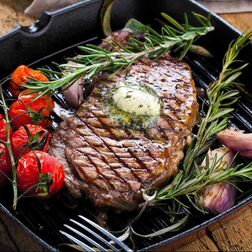 How you doin’? I’m a butter eater…no kidding with all my cooking and baking I go through 3 to 4 pounds of butter a week. Several years ago Perspectives created an extensive line of compound butters for the Vons Companies. What exactly are compound butters? Compound butters (beurre composé) are mixtures of butter and other good ingredients. They are used to enhance the flavor in various dishes, kind of like a sauce, but much easier. It is softened butter, whipped together with a combination sweet or savory ingredients. While the concept is simple, the potential flavor combinations are complex and endless. I refer you to Survival Guide: Cooking Lesson #149 on Compound Butters. You can pair baguettes, scones, rolls, pancakes, waffles or cornbread with sweet compound butters flavored with orange or lemon zest, maple syrup, honey or cinnamon. Savory compound butters can include garlic, shallots, parsley and lemon (Maître’d Butter) perfect for steaks or even ground lobster shells, butter and lemon zest in Lobster Butter as an enhancement for seafood. A compound butter is made by just whipping additional elements, such as herbs, spices or aromatic liquids, into butter. The butter is then reformed, usually in plastic wrap or parchment paper, rolled and frozen until it is firm enough to be sliced. These butters can be melted on top of meats and vegetables, used as a spread or to finish various sauces. Recently, I started to see references to Cowboy Butter, a newer flavor concocted to enhance cooked steak. I’ve seen lots of photographs of home cooks dipping their beautiful slices of beef into "cowboy butter," I had to try it for myself. Cowboy butter, a compound butter made of garlic, herbs and spices, has become a social media sensation, with more than 67 million views extolling the melty, buttery delight to date. Cowboy Butter has a decidedly savory, garlicky, oniony vibe from the minced garlic and fresh chives. The other fresh green herbs give it earthy notes, and the salt, spices, and citrus give it the perfect bold finish. It’s also got some smoky highlights from the addition of paprika, chili powder and even an optional shot or liquid smoke. It is perfect for steak but it is also for dipping any protein into it, from shrimp to chicken to pork—and would also be amazing to spread onto warm bread or stirred into mashed potatoes. Basically, any savory use you can think of for butter would only be enhanced by subbing your standard stick for this homemade deliciousness, including using it as a topping for sautéed or roasted vegetables or grilled corn on the cob. Like any compound butter, it’s totally okay to store cowboy butter for another meal. Leftovers can be kept in a sealed container for two weeks in the fridge or will last up to six months in the freezer. Watch out Roy Rogers and Dale Evans, Gene Autry, or my favorite, Hopalong Cassidy! Active Time: 10 mins Total Time: 2 hrs 10 mins Ingredients 1/2 cup (4 ounces) softened unsalted butter 2 tablespoons finely chopped garlic 1 tablespoon chopped fresh flat-leaf parsley 1 tablespoon chopped fresh chives 2 teaspoons Dijon mustard 1 teaspoon grated lemon zest plus 1/2 teaspoon fresh juice 1 teaspoon smoked paprika 1 teaspoon kosher salt 1/2 teaspoon freshly ground black pepper 1/2 teaspoon chopped fresh thyme (from 1 [1/2-ounce] package) 1/4 teaspoon chili powder 1/4 teaspoon crushed red pepper 1/2 teaspoon liquid smoke (I prefer Wright’s brand) Directions
ChefSecret: Some people on social media claim Cowboy Butter is the best steak sauce they ever tasted. To use on steak, melt and use as a dipping sauce. Quip of the Day: Q. Did you hear about the cowboy who died with his boots on? A. He didn’t want to stub his toe when he kicked the bucket! ------------------------------------------- Do you have a question or comment? Send your thoughts to [email protected]. All recipes and cooking tips are posted on our website https://www.perspectives-la.com/covid-19-survival-guide. ------------------------------------------- To you and everyone dear to you, be strong, positive, stay well, stay safe and be kind. Take a breath and count your blessings, and if you have a little extra to share with others, please consider donating to Feeding America, Tunnel to Towers, Union Rescue Mission and/or American Red Cross. #Butter #CompoundButter #Steak #Chicken #Vegetables #2024Recipes #URM #T2T #FeedingAmerica #RedCross #PerspectivesTheConsultingGroup ©PERSPECTIVES/The Consulting Group, LLC, 2024 Zesty Grilled Chicken Salad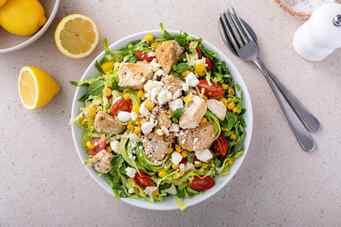 How you doin’? I really hate boring salads—you know the ones that have a little iceberg lettuce and a tomato slice with a bottled commercial dressing? We can do so much better than that. The bestselling salad at my first restaurant was The Conglomeration. It was a large salad made with chopped iceberg, romaine, crisp bacon, chopped hard cooked egg, cucumber, shredded carrots, diced celery, chopped olives, red onion and chunks of soft white cheese. All of this was tossed with my secret Champagne vinaigrette—a masterpiece! The more “orts” (ingredients) the better. We even took care to serve it on a Hawaiian monkey pod, garlic rubbed salad plate. When we found out this was the bestselling salad, I put our kitchen staff’s talents to invent and test new mixed salads. I declared our restaurant would never serve ho-hum salads. Even our Angel’s Fruit & Yogurt Salad was loaded with flavors and textures. Our guests used to ask me, why can’t I make salads like this at home? You see, restaurant salads are delicious because of the variety and freshness of the ingredients. Most people don’t keep a wide variety of fresh veggies on hand for fear they will spoil before consuming. So please trust me, there's more to making salads than heaping on a pile of deep-fried croutons and boatloads of cheese. Here is what you can do from your very own kitchen to make the best salads ever:
Ingredients 4 ounces spring lettuce mix salad blend 4 tablespoons grilled chopped chicken breast 3 tablespoons grilled fresh corn 3 tablespoons low-sodium, canned black beans, drained 3 grape tomatoes, halved 2 tablespoons red or yellow bell peppers, diced 1-1/2 tablespoons Mexican cheese blend 1 tablespoon hulled pepitas, toasted 2 ounces Spicy Cilantro-Avocado Dressing, (see recipe below) 3 thin slices of fresh lemon, quartered ... and whatever you want to add Directions
ChefSecret: I sometimes use leftover chilled chicken meat or better yet warm fried chicken tenders in this salad. Zesty Avocado-Cilantro Dressing Prep time: 5 minutes Cook time: 15 minutes Total time: 20 minutes Yield: 16 ounces+ Ingredients 2 ounces toasted macadamia nuts 1 tablespoon fresh cilantro leaves 1 teaspoon fresh, peeled garlic 1/2 teaspoon fresh, seeded and ribbed diced red jalapeño pepper 3/4 cup fresh, peeled and pitted avocado 2 tablespoons fresh lime juice 5 ounces cold water 1/4 teaspoon kosher salt Directions
ChefSecrets: Freshly-roasting the macadamia nuts adds another level of flavor to the salad dressing. Quip of the Day: “Why is it called a Caesar Salad? ‘Cause Caesar ruled the romaines.” ------------------------------------------- Do you have a question or comment? Send your thoughts to [email protected]. All recipes and cooking tips are posted on our website https://www.perspectives-la.com/covid-19-survival-guide. ------------------------------------------- To you and everyone dear to you, be strong, positive, stay well, stay safe and be kind. Take a breath and count your blessings, and if you have a little extra to share with others, please consider donating to Feeding America, Tunnel to Towers, Union Rescue Mission and/or American Red Cross. #EntreeSalads #Salads #PerfectSalads #Lunch #Dinner #Vinaigrette #CilantroAvocado #Dressing #2024Recipes #URM #T2T #FeedingAmerica #RedCross #PerspectivesTheConsultingGroup ©PERSPECTIVES/The Consulting Group, LLC, 2024 …from the Perspectives’ Kitchen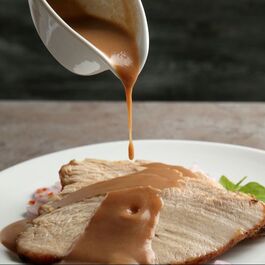 How you doin’? Just two more sleeps ‘till Turkey Day. Many people leave the turkey gray to the very last minute. Please don’t do that. Afterall, aren’t all those Thanksgiving dishes you’ve work so hard to make really just carriers for savory turkey gravy? This year plan ahead and don't let those drippings in the bottom of the roasting pan go to waste. Use them to make an easy and flavorful turkey gravy from scratch for your holiday feast. Here's how to make delicious turkey gravy from drippings. Ingredients 4 cups of turkey broth or chicken broth 1/4 cup of reserved turkey fat from the bottom of the roasting pan 1/2 cup of white wine 1/4 cup of all-purpose flour Kosher salt and pepper to taste 1 teaspoon freshly chopped sage 1/2 teaspoon Kitchen Bouquet or soy sauce (for added color and umami flavor) Directions
Other herbs and spices may suit your tastes as well. Try experimenting with a pinch of cloves, a sprinkle of thyme and a touch of mace. Now that you have the gravy mastered, you'll need plenty of mashed potatoes (tomorrow’s post) and bread stuffing. ChefSecret: The trick to avoiding lumps in your turkey gravy is to cook together equal parts of flour with a turkey fat. This mixture is known as roux and serves as a thickener for gravy. Generally, 1/2 cup of roux will thicken 4 cups of gravy. Quip of the Day: Did you hear about a book called “Fifty Shades of Gravy”? It’s very saucy. ------------------------------------------- Do you have a question or comment? Send your thoughts to [email protected]. All recipes and cooking tips are posted on our website https://www.perspectives-la.com/covid-19-survival-guide. ------------------------------------------- To you and everyone dear to you, be strong, positive, stay well, stay safe and be kind. Take a breath and count your blessings, and if you have a little extra to share with others, please consider donating to Feeding America and/or American Red Cross. #ThanksgivingRecipes #Thanksgiving #Sauce #Gravy #TurkeyGravy #Holidays2023 #BeThankful #QuarantineKitchen #Covid19 #RedCross #FeedingAmerica #PerspectivesTheConsultingGroup ©PERSPECTIVES/The Consulting Group, LLC, 2023 … from the Perspectives’ Kitchen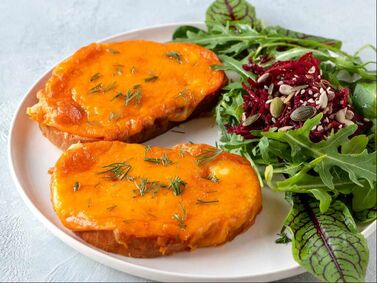 How you doin’? One hundred years ago Lawrence Frank and Walter Van de Kamp co-founded a fairytale-like restaurant called Tam O'Shanter, in the Los Feliz area of Los Angeles. At that time no one could have anticipated that patrons would still be lining up a full century later. These two gentlemen were major players in the restaurant and food scene in Southern California—Lawry’s The Prime Rib, Lawry’s Foods, Lawry’s California Center, The Five Crowns, The Ben Johnson, Van de Kamps and several more too numerous to name. The leadership still remains in the family with the great grandson. The key to the restaurants’ success is largely a sense of family connecting owners, co-workers and guests. “There is an extreme sense of ownership among all my co-workers, that they have this piece of history that they’re stewarding for whatever time that they’ve been here,” John Lindquist, Managing Partner said. “It’s that type of camaraderie and family that shows through to the guests coming in day in and day out.” While the ownership remains in the same family, the Hollywood art director designed restaurant has had several changes in names over the years—Montgomery’s Country Inn, Tam O’Shanter, The Great Scot and then back to Tam O’Shanter. I was the design and marketing director at Lawry’s for 5 years advancing the quality and reach of their products and restaurants. But as much as I contributed to them, I took away even more. One of the legacy menu offerings of The Tam is Welsh Rarebit. The origin of the name is uncertain, but it’s generally believed that the word rarebit is a corruption of the word rabbit. 'Welsh rabbit' first appeared as a dish in 1725 and later in many eighteenth-century cookbooks. It is thought that the dish was attributed to the Welsh because of their historic fondness for cheese, which was used as a substitute for meat as a source of protein by poor peasants. Welsh Rarebit is described by some as 'posh cheese on toast'. Possibly it was to indicate how much the Welsh were said to enjoy hot cheese as do I. Tam O’Shanter Welsh Rarebit is still going strong 100 years on and still as delicious as it always has been. Following is the best I remember it. Prep time: 15 minutes Cook time: 25 minutes Yield: 6 servings Ingredients 1-1/2 cups whole milk 2 cups mild Cheddar cheese 1/2 stick salted butter 1/2 cup all-purpose flour, sifted 1 teaspoon dry mustard (I prefer Coleman’s) 1/4 teaspoon cayenne pepper 1/4 teaspoon kosher salt 3/4 cup beer 2 teaspoon Worcestershire sauce (I prefer Lea & Perrins) 2 teaspoon steak sauce (I prefer A-1 sauce) 1/4 teaspoon Tabasco sauce 6 toasted English muffins 12 crispy bacon strips (optional) 3 teaspoons paprika (optional) Directions
ChefSecrets: I prefer to use mild or medium Cheddar cheese as it is creamier than using sharp, aged cheddar. On occasions, I like to use hollowed out baked potato skins instead of a rarebit dish to make it a real meal. Quip of the Day: It's called Welsh rarebit, not cheese on toast You are so daft said the dinner party host Do you like fine wine? There was no response Why on earth did I invite you? Leave at once …Kelvin Rush ------------------------------------------- Do you have a question or comment? Send your thoughts to [email protected]. All recipes and cooking tips are posted on our website https://www.perspectives-la.com/covid-19-survival-guide. ------------------------------------------- To you and everyone dear to you, be strong, be positive, stay well, stay safe and be kind. Take a breath and count your blessings, and if you have a little extra to share with others, please consider donating to Feeding America and/or American Red Cross. #Appetizer #RarebitSauce #CheddarCheese #TamOShanter #Lawrys #TheGretScot #2023Recipes #Covid19 #FeedingAmerica #RedCross #PerspectivesTheConsultingGroup ©PERSPECTIVES/The Consulting Group, LLC, 2023 |
For over 4 decades collaboration and vision have been the cornerstones of our approach to developing innovative solutions. We fuel innovation, uncover opportunities, discover trends and embrace sustainability, turning imaginative ideas into profitable realities. Categories
All
Archives
July 2024
|
www.perspectives-la.com
Copyright © 2021 Perspectives/The Consulting Group, LLC | Henderson, NV 89052 | 310-477-8877
Copyright © 2021 Perspectives/The Consulting Group, LLC | Henderson, NV 89052 | 310-477-8877


 RSS Feed
RSS Feed